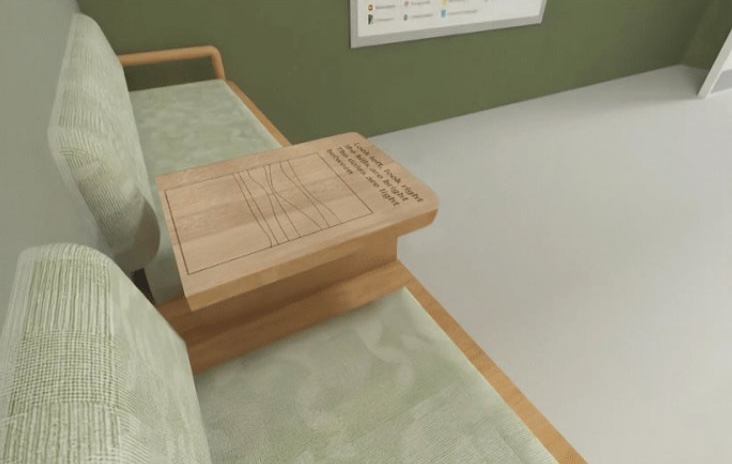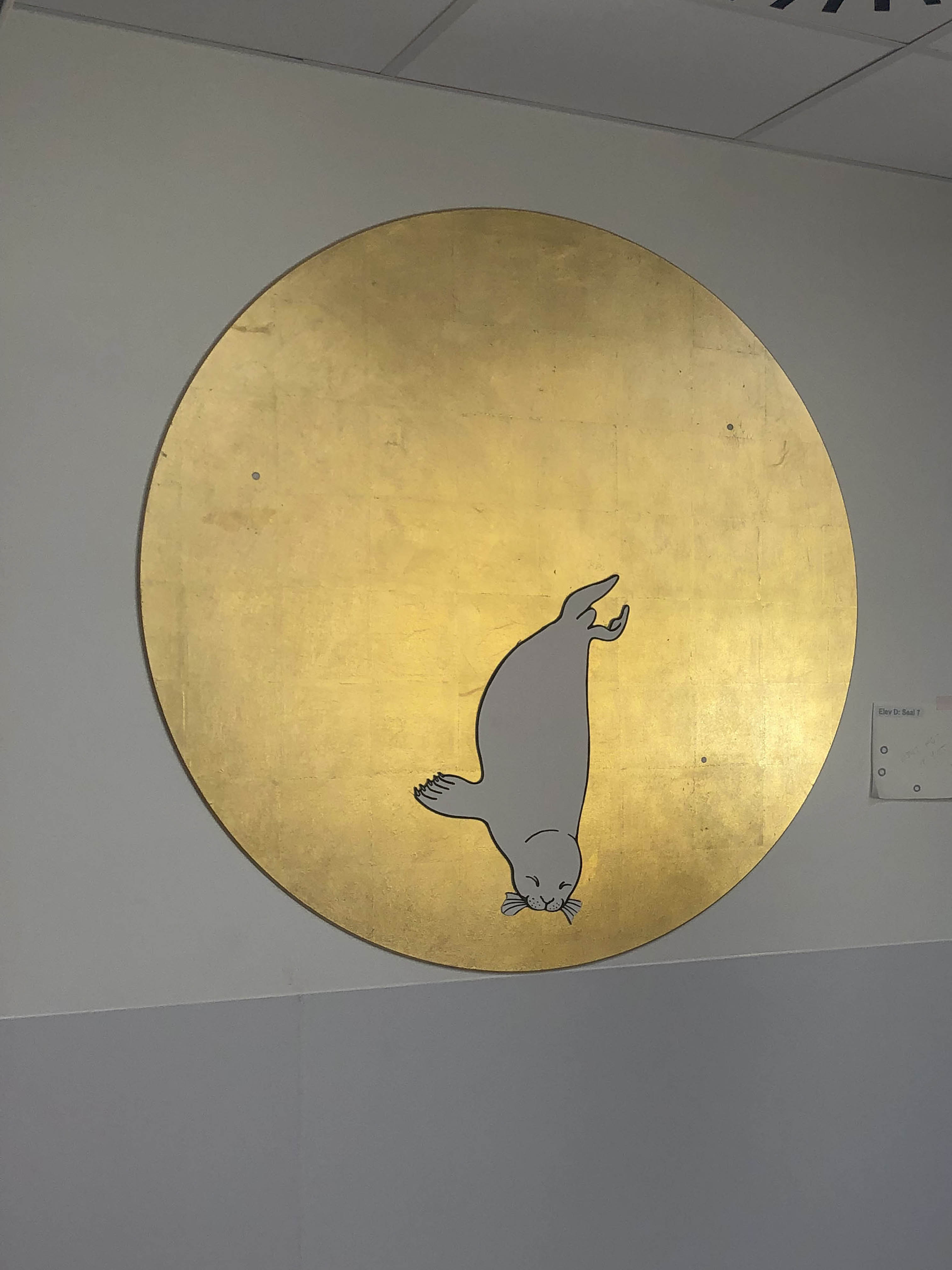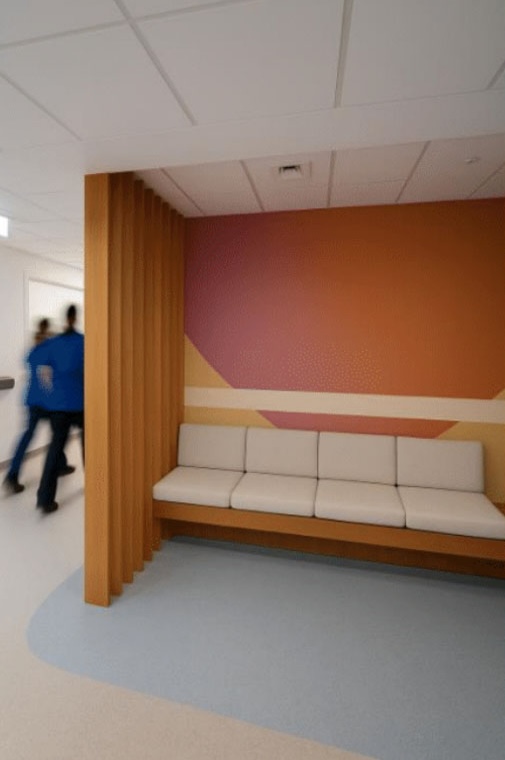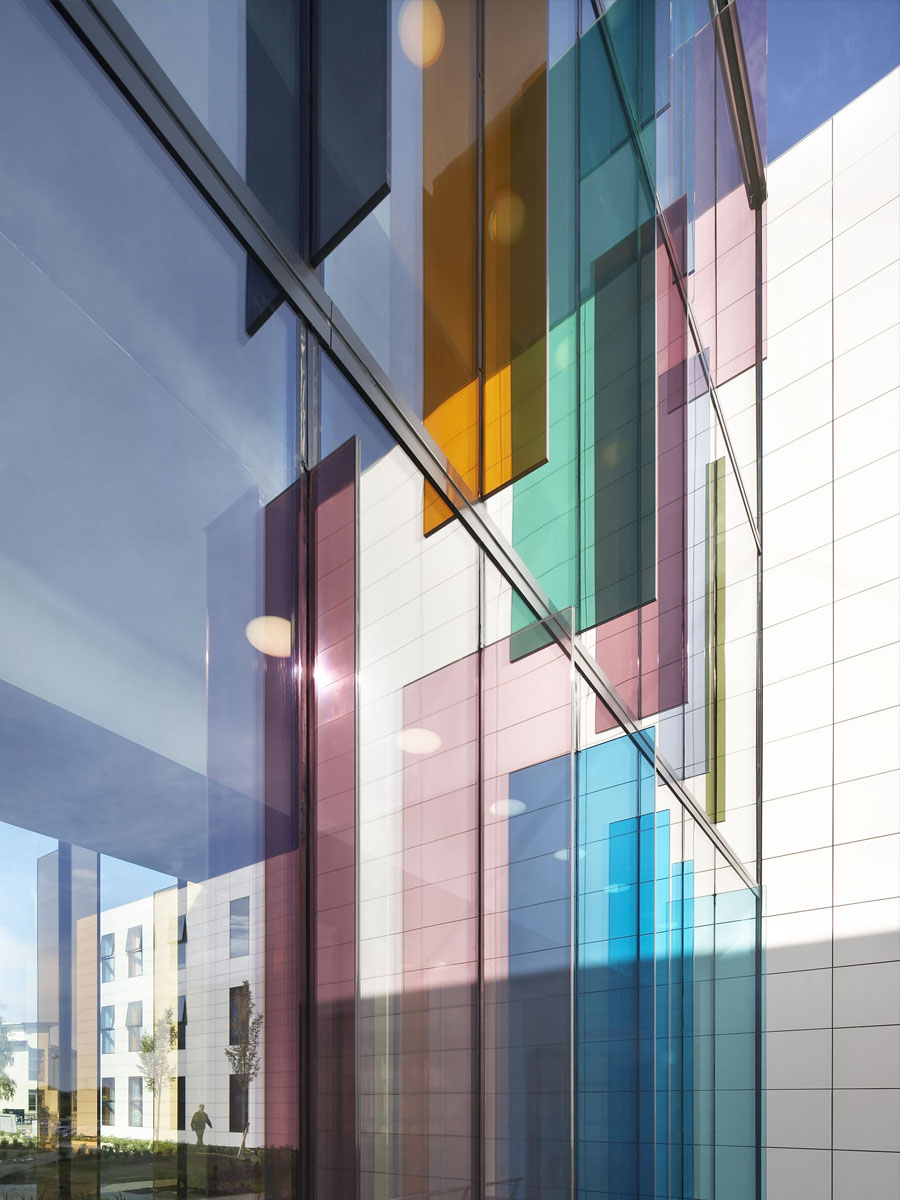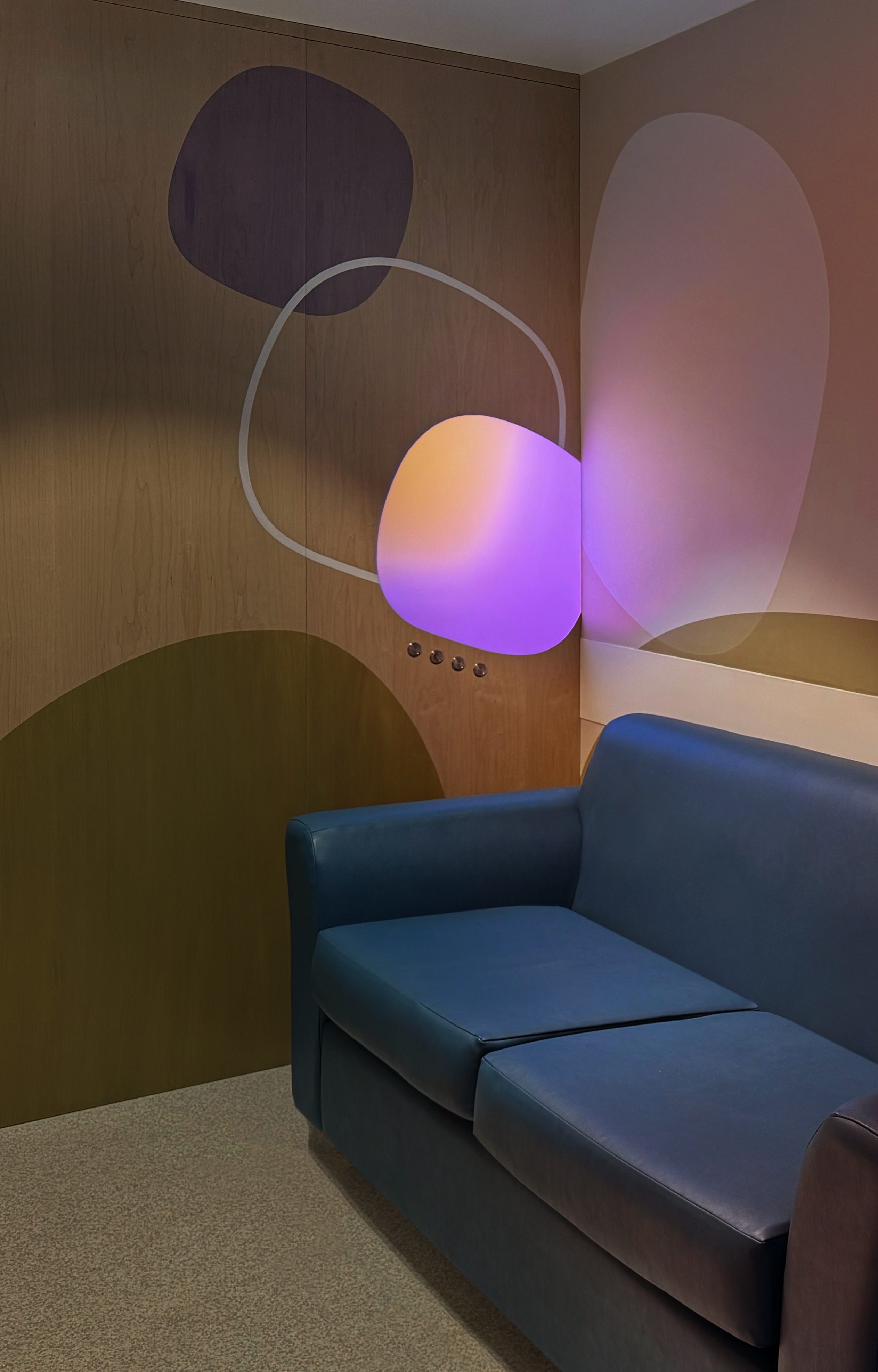Healthcare interiors are uniquely complex environments to specify. As a client, clinician or designer, we need to strike a delicate balance between functionality, safety and emotional needs when selecting materials. At Art in Site, we take a playful approach to material specification, researching, experimenting and expanding our material library; finding new and creative applications that might not traditionally be associated with a healthcare setting. In the second in our series of ‘How to’ guides, senior interior designer, Chloe Northover-Naylor shares her thoughts on how to create interiors that are rich in colour, texture and materiality, successfully juggling form and function.

Embrace nature: harness the benefits of wood
A visit to hospital can make anyone feel anxious, overwhelmed or emotionally heightened. Where possible, try to incorporate natural materials such as wood that are warm to the touch, have a soothing effect, and promote healing.
- Consider places where verse or imagery could be carved into the fabric of the architecture or incorporated within bespoke fixtures or furniture.
- Providing an opportunity to run a finger across these tactile surfaces can help to support self-regulation, helping patients and visitors manage anxiety and calm down during emotional surges.
Go beyond the tried and tested: consider using materials in unexpected ways
It’s easy to reach for the materials we all know and trust, serving the original function they were designed for, but we also know a healthcare setting can be elevated by a choice material used in unexpected ways. In past projects, we’ve specified marmoleum flooring for wall marquetry, gold leaf, fluorescent paint for scanning rooms, as well as printing onto stainless steel, etching into concrete and ‘reverse graffiti’ - a technique where concrete or stone are cleaned through stencils.
Is that really vinyl? Weave new textures into the fabric of healthcare
Vinyl has long been the go-to for healthcare furniture upholstery due to its enhanced hygiene performance and durability, but historically, it has lacked warmth and softness. With greater emphasis now being placed on patient experience and the role of the hospital environment in recovery, fabric designers are finding clever ways to replicate and engineer the look, feel and structure of fine woven textures such as linen, silk and suede. Seating no longer needs to feel cold and sticky to touch. Take a look at Vescom’s beautiful vinyl collection for inspiration!
Shiny isn’t always bad – but creating contrast is even better
‘Clinical’ and ‘shiny’ are words that we hear used frequently in early design conversations, but shiny surfaces shouldn’t necessarily be discarded when considering material choices.
Pairing contrasting textural surfaces creates visual interest and depth to an interior, while simultaneously serving as a tactile wayfinding tool for service users with visual impairment:it can help to signal a threshold or junction.
- Consider placing gloss next to matt, reflective alongside non-reflective, ribbed beside smooth and putting curves next to angles.
On a tight budget? Print and paint can still pack a punch
When you’re constrained by budget, don’t underestimate the impact of edge-to-edge wallpapers and a thoughtful paint plan. While there is always the potential for wall finishes to feel flat and lacking in tactility, scanning high-res imagery of fabric or collaged artworks and using them as a wallpaper, can mimic a textured appearance, while a mottled paint application gives the appearance of more organic, naturalistic, wall finishes. For inspiration, take a look at the wonderful work of David Tremlett in the New QE11 hospital.
Look beyond the walls to the windows
Glazing in the form of exterior windows, internal partitions or door panels, is a great material for adding visual interest. Normally part of the architectural offering, they’re easily wipeable and offer the opportunity to integrate colour, dramatically transforming a space.
At Chesterfield we worked in collaboration with The Manser Practice, installing multicoloured glass pins positioned at perpendicular intervals. This design solution granted patients privacy while retaining the benefits of a bright, naturally lit corridor.
Keep it flush – collaboration is key to compliance
Working closely with the fire and infection control teams right at the start of a project can be hugely beneficial when it comes to specifying materials.
By working collaboratively with these teams, we can often find ways to work around potential limitations - ensuring a design isn’t compromised and the outcome still complies with fire and infection control.
- Choosing materials that can sit flush within a frame, have limited seams or picking points and can withstand the hard clinical cleaning procedures are all important consideration
If you would like to know more about our work, or to arrange a coffee with Chloe and the team, drop us a DM, or call 020 7039 0177 to arrange a coffee and a chat.


